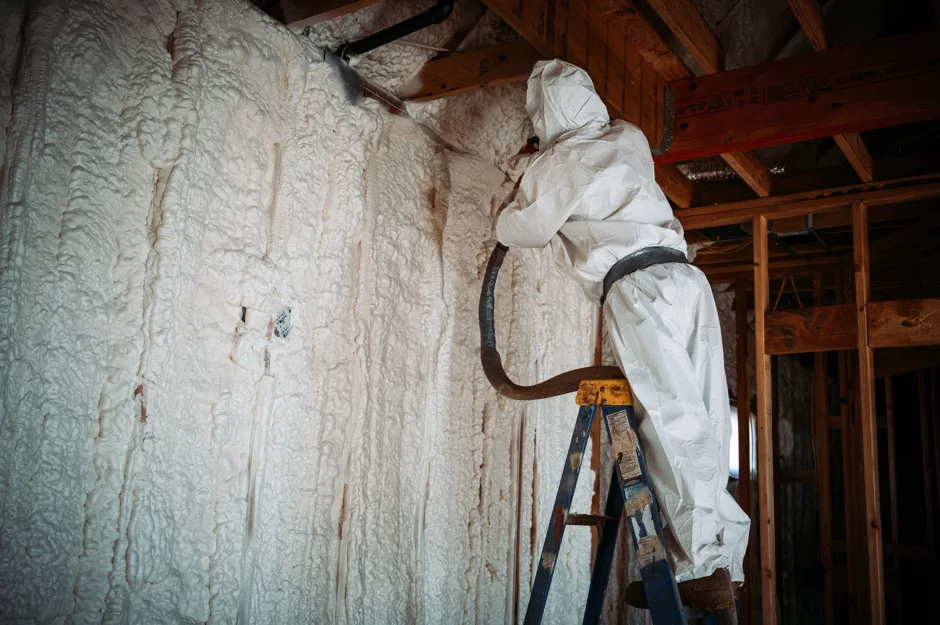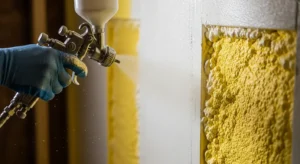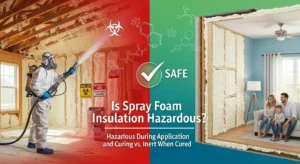Spray foam insulation has quickly become a favorite for homeowners looking to cut energy costs and seal out drafts. With its ability to create an airtight barrier, it’s widely used in attics, basements, and wall cavities. But despite its popularity, many still question whether it’s safe to use inside a home, especially with concerns about fumes, indoor air quality, and long-term exposure.
In this guide, we’ll break down the full safety profile behind the question: is spray foam insulation safe? You’ll learn when it’s safe, what risks to watch for, and how to prevent any health or air quality issues.
When Is Spray Foam Insulation Considered Safe?
Spray foam insulation becomes safe only after it has fully cured—a process that typically takes 24 to 72 hours. During curing, the foam undergoes a chemical reaction and releases gases known as volatile organic compounds (VOCs). These fumes can irritate the skin, eyes, or lungs if you’re exposed to them too early.
Once the foam has hardened and off-gassing stops, it becomes inert and non-toxic. This means it’s safe to re-enter the space after the installer confirms the curing is complete. Rushing this step or skipping proper ventilation can increase the risk of discomfort or health issues, especially in enclosed areas like attics or crawl spaces.
Is Professional Installation Necessary for Safety?
Spray foam isn’t a weekend DIY project. It involves mixing chemicals on-site and applying them under controlled conditions. If the ratios are off or the application is uneven, the foam may not cure properly. This can lead to long-term off-gassing, reduced insulation performance, or indoor air problems.
Professionals follow manufacturer guidelines, wear protective gear, and ensure the environment—temperature, humidity, and ventilation—is just right. They also know how to isolate treated spaces during installation to protect your home from contamination. Choosing a certified installer helps reduce both health risks and insulation failures, making the process safer from start to finish.
The Role of Ventilation in Spray Foam Safety
Because spray foam seals tightly, any gases released during application can get trapped if ventilation isn’t planned correctly. That’s why fresh air circulation is a must. Without it, fumes may linger longer and make the space unsafe.
Most professional installers bring in temporary exhaust fans or use mechanical systems to move air in and out. In newer homes, systems like HRVs (Heat Recovery Ventilators) or ERVs (Energy Recovery Ventilators) are often recommended after installation to maintain indoor air quality. Good airflow helps cure the foam faster and prevents chemical buildup that could otherwise lead to irritation or discomfort.
Read More: Is Spray Foam Insulation Worth the Investment
Why You Should Choose Low-VOC, Certified Spray Foam Products?
Every spray foam product is not designed with indoor safety in mind. Older or cheaper formulas tend to emit more chemicals, increasing your exposure risk. With safer options now available, it is better to use modern formulations that minimize off-gassing during and after application.
When discussing your project, ask your installer whether the product is certified. Look for:
- GREENGUARD Gold
- LEED-compliant
- EPA Indoor AirPLUS approved
These certifications ensure the product meets safety standards and emits fewer harmful chemicals. Using certified, low-VOC spray foam improves air quality and reduces health concerns for everyone in your home.
Where Spray Foam Insulation Can Be Safely Applied?
Spray foam is generally safe and highly effective in spaces that are isolated and easy to ventilate—like attics, wall cavities, and crawl spaces. These areas are less frequently occupied and easier to seal off during installation, making them ideal zones for application.
On the other hand, using spray foam too close to HVAC intakes, recessed lights, or open wiring can cause problems. Heat-sensitive zones or areas with airflow equipment require careful planning. A trained installer will assess your space and decide where spray foam is appropriate—and where it could pose a risk.
Precautions for People with Sensitivities or Health Risks
For most people, cured spray foam poses no ongoing danger. However, individuals with asthma, chemical sensitivities, or respiratory issues might still experience discomfort if exposed too soon or if ventilation is inadequate. If your household includes sensitive individuals, plan ahead:
- Wait longer than the minimum 24–72 hour cure time
- Limit spray foam use to areas that are not part of daily living spaces
- Ask your contractor about low-emission or hypoallergenic options
If you are careful choosing the best-suited option and don’t cut corners on installation, even people with sensitivities can benefit from spray foam without unnecessary exposure.
Read More: How Spray Foam Insulation Can Improve Indoor Air Quality
Looking for Safe Spray Foam Insulation You Can Trust?
A safe insulation job depends on more than just the product—it requires proper handling, thoughtful planning, and a clear understanding of how spray foam behaves during and after application. At Air Seal Insulation, your safety is always the priority. We use certified low-VOC spray foam and follow strict protocols—from expert application to proper ventilation—to ensure a safe, clean installation every time.
Contact us today, and let certified professionals handle your project the right way.




